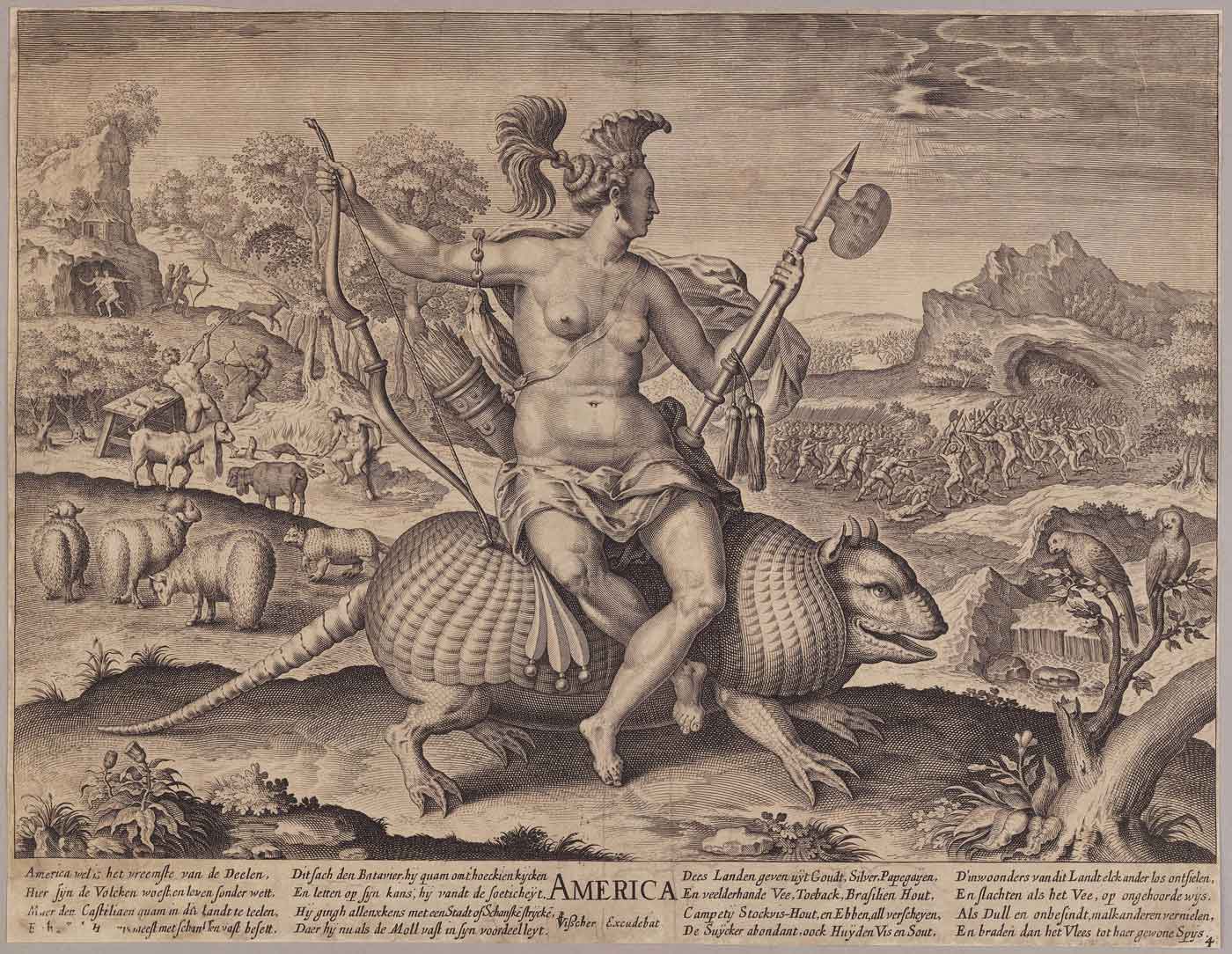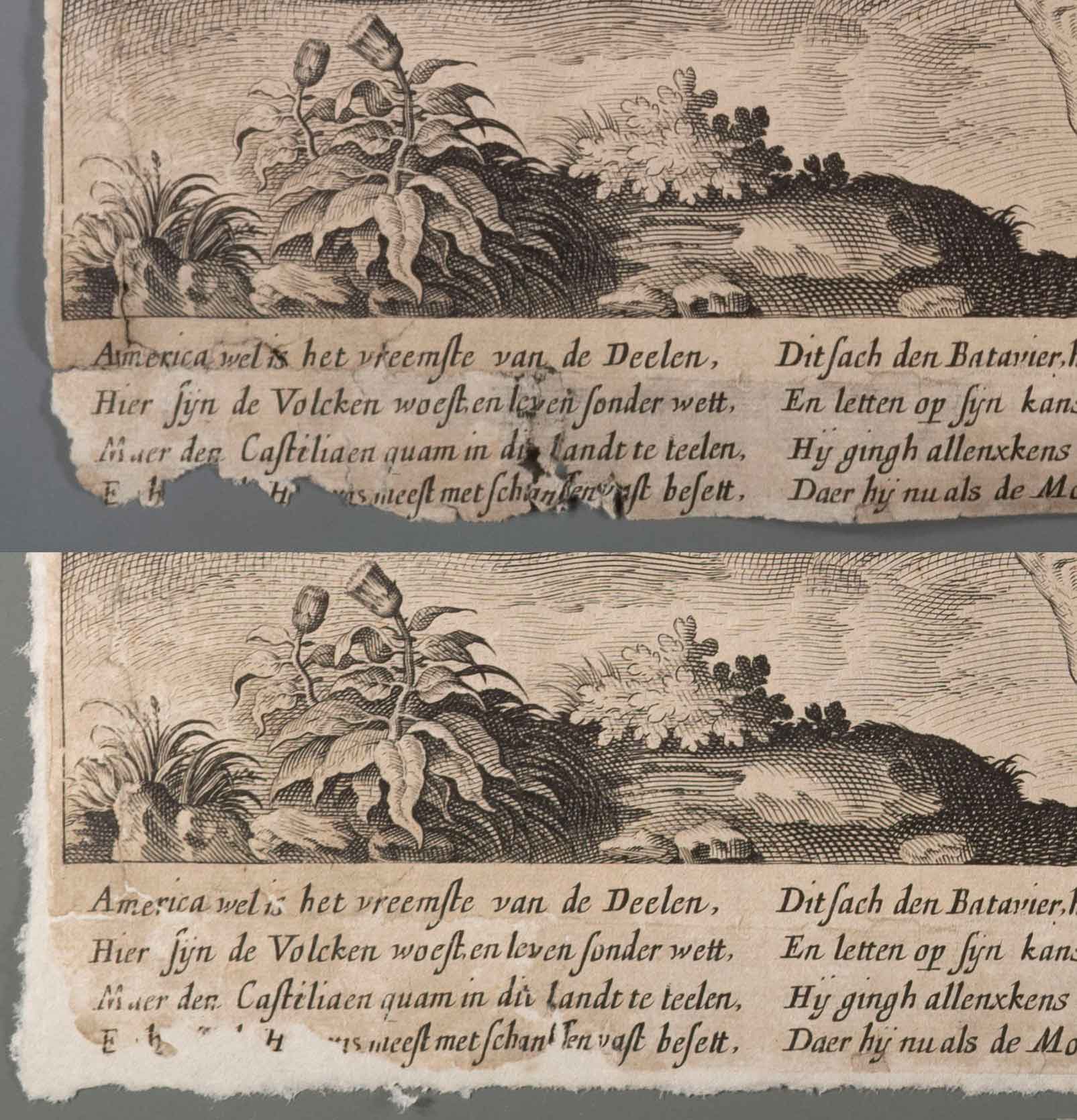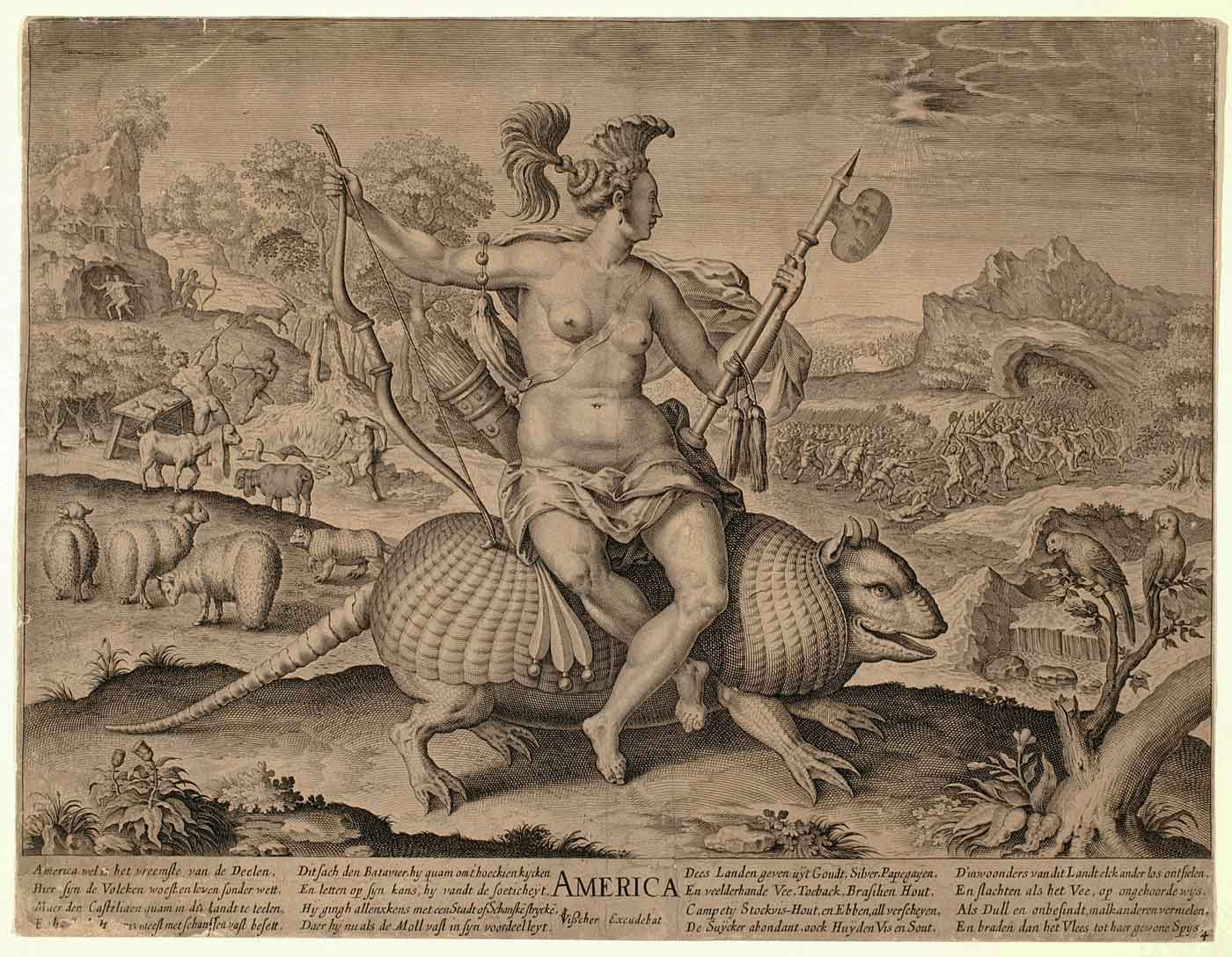Today we’re taking a close look at a print on view in the McNamara Gallery at the DeWitt Wallace Decorative Arts Museum, one of the Art Museums of Colonial Williamsburg and home to one of the nation’s premier collections of fine and decorative arts. It’s part of an exhibition entitled Promoting America: Maps of the Colonies and the New Republic.
WHAT IS IT?
This ca. 1650 Dutch print of America is the work of Claes Jansz Visscher (1587-1652). It is in turn a copy of an engraving by Adriaen Collaert (ca. 1560-1618) after a painting by Maerten de Vos (1532-1603). With Europeans’ arrivals in the Americas in 1497, artists and artisans were inspired to create images to promote the land’s abundant and “exotic” natural resources. In this image, the artist personified America as an American Indian seated upon an armadillo and surrounded by other animals (Figure 1).

WHAT’S THE STORY?
In preparation for exhibition, the print underwent evaluation and treatment in the paper conservation lab. Assistant Paper Conservator Perrine LeSaux found the print to be discolored and lined to a later backing paper. It was necessary to remove this lining to address the discoloration and to fill losses (Figure 2). Removal required the use of enzymes, which digested the adhesive and allowed the backing paper to be released easily from the print.

Once the backing paper was removed, the print was placed on a lightbox so transmitted light passing through the paper could reveal the losses, tears, and thinned areas (Figure 3).

The print was then washed to reduce the discoloration and neutralize acidic compounds in the paper. Losses in paper are usually filled with additions of new paper cut precisely to fit each void, but the thinness of the skinned paper called for a different approach. Instead, a pulp mixture of macerated papers was applied gradually into the loss to produce seamless and discreet fills (Figure 4).

The tears in the print were then stabilized by adhering strips of thin Japanese tissue to the back of the paper in areas of damage. Although the pulp fills and mends stabilized the paper, the print was still very thin and delicate and needed a lining paper to support the print. Finally, the print was inpainted to reintegrate the image and reduce the appearance of damage.
WHY IT MATTERS?
Due to the fastidious work done to make the print exhibit ready the print was revived for display where it stands as a reminder to modern viewers of early perspectives of America from the old world (Figure 5).

SEE FOR YOURSELF
For more information on this print, as well as thousands of objects in our collections online, visit: Print of America by Claes Jansz Visscher
We also encourage you to visit this print at the Art Museums of Colonial Williamsburg where you can explore treatment details on the interactive touch tables in the McNamara Gallery.
Colonial Williamsburg is the largest living history museum in the world. Witness history brought to life on the charming streets of the colonial capital and explore our newly expanded and updated Art Museums of Colonial Williamsburg, featuring the nation’s premier folk art collection, plus the best in British and American fine and decorative arts from 1670–1840. Check out sales and special offers and our Official Colonial Williamsburg Hotels to plan your visit.
